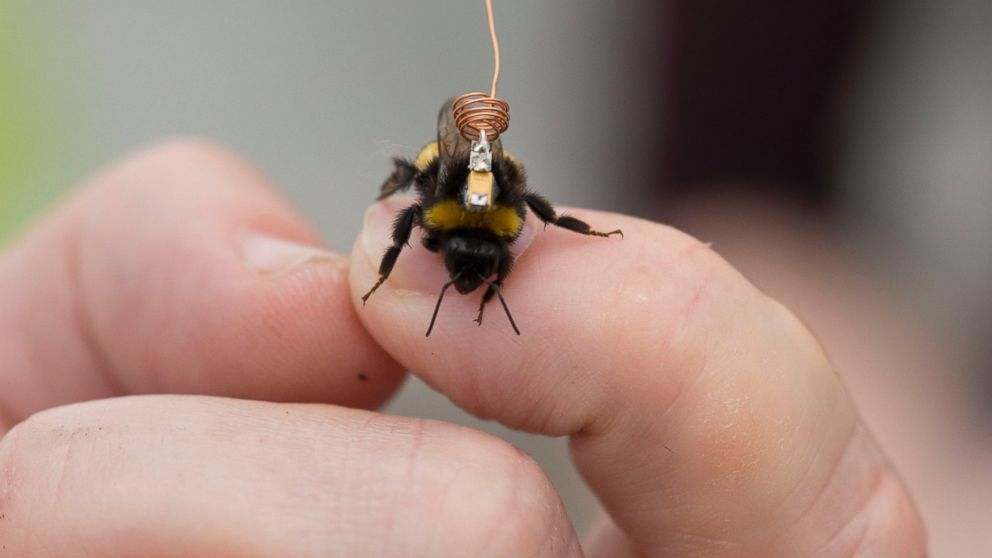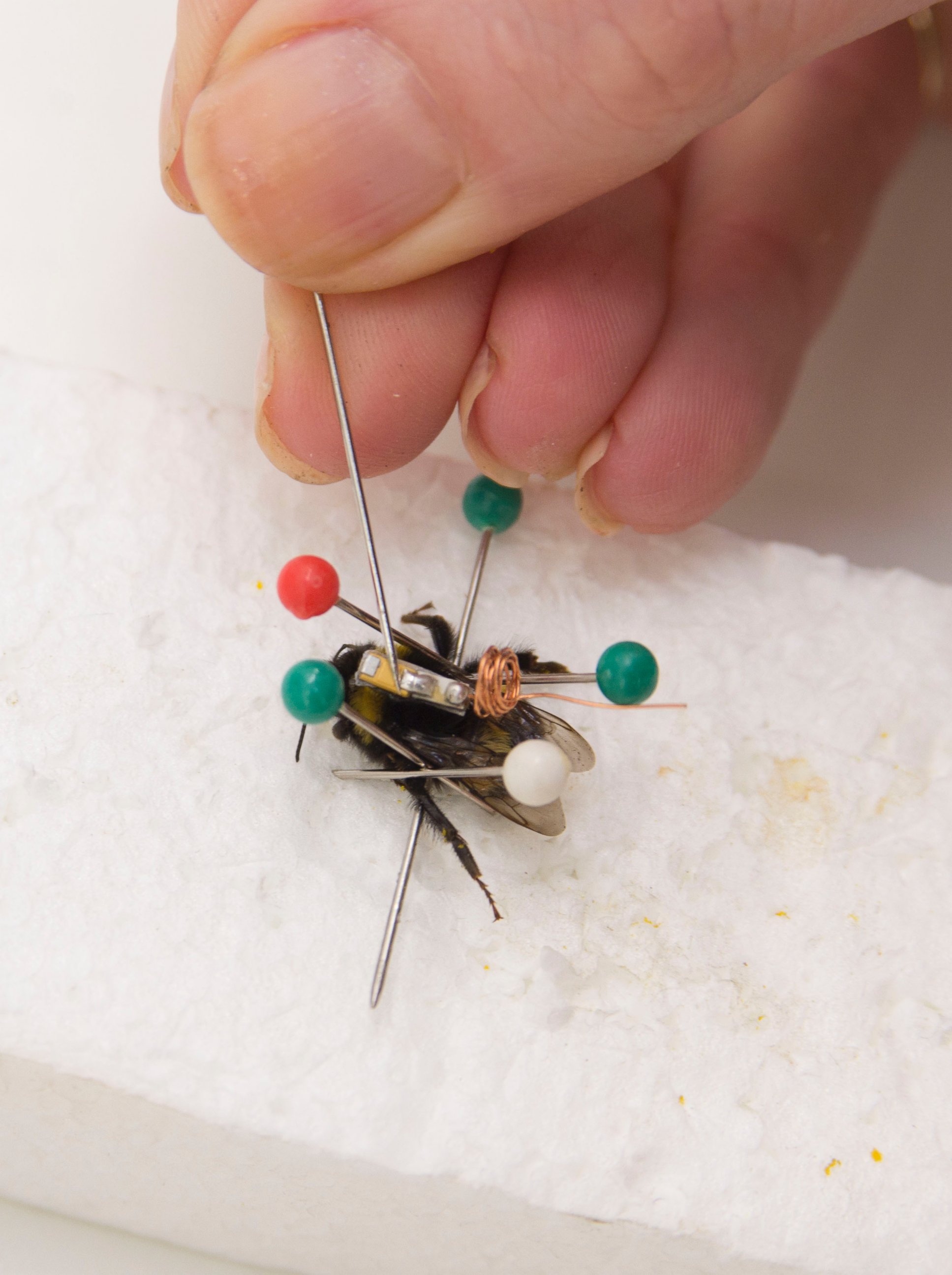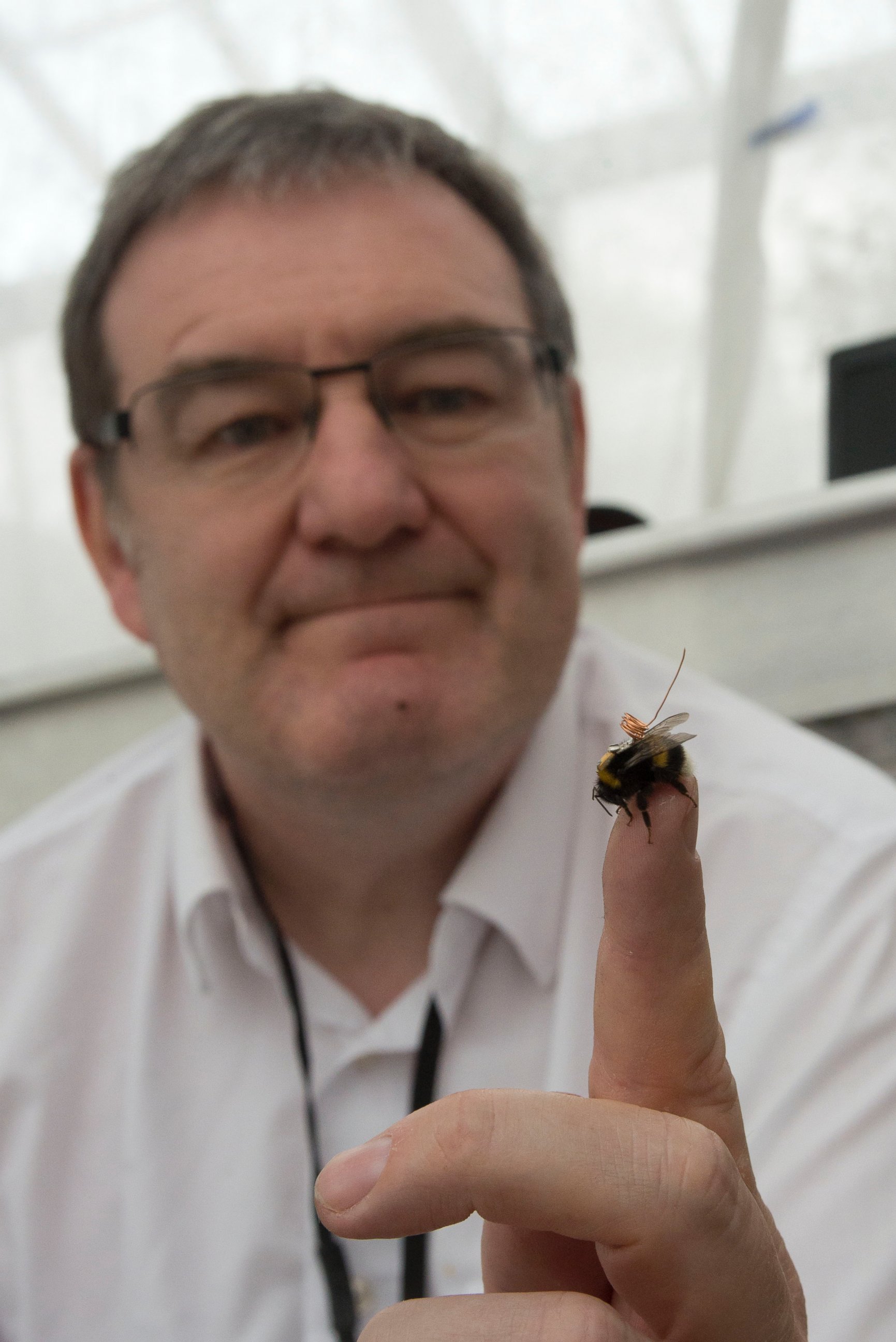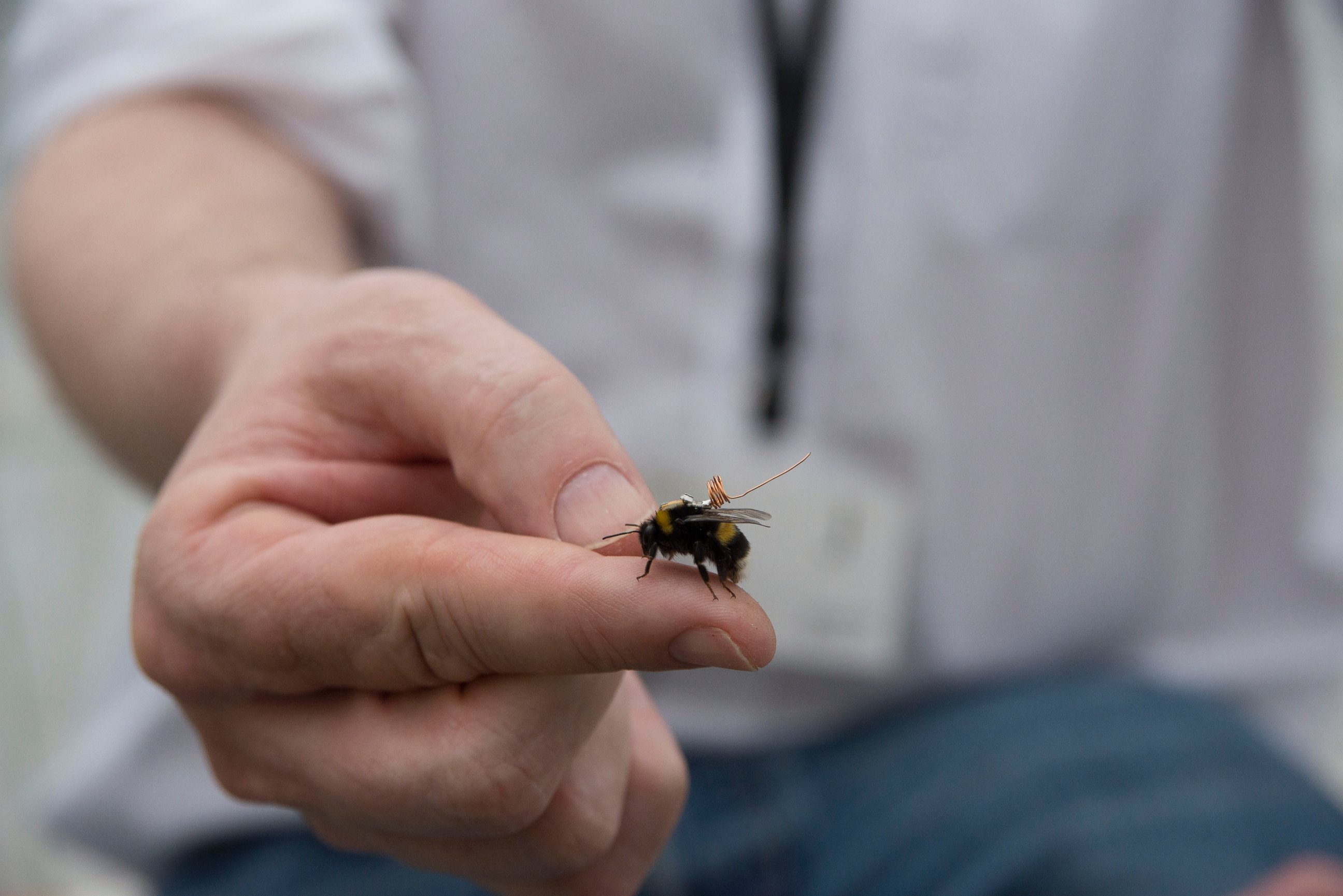Why Some Bees Are Now Carrying Backpack Trackers
Long-range tracking technology will help researchers understand bee behavior.

— -- Here's the buzz about these crazy bee trackers: Ecologists at the Kew Royal Botanic Gardens in London have suited up bumble bees with tiny metal trackers to map their behavior in hopes the data will help them understand why the insects are in decline.
Attaching something so small to a buzzing bee takes both patience and precision.

In order to suit up the bees, they were first chilled for ten minutes to make them calmer. Using tweezers, researchers then carefully glued the trackers onto the bees' backs using superglue.

The bee backpacks measure 4.8 millimeters by 8 millimeters. They include radio frequency identification tags that allow ecologists to detect bee behavior from as far as 1.2 meters from a detecting unit.
Each bee has a unique tag that allows researchers to monitor their behavior. The tag reports back to the detecting unit within its range.

"This piece of the puzzle, of bee behavior, is absolutely vital if we are to understand better why our bees are struggling and how we can reverse their decline," Sarah Barlow, a scientist at Kew Gardens who tested the technology, said in a statement.
The technology, which was developed by Tumbling Dice Ltd., could be used after the trial to track the movements of other insects and how they interact with flora, fauna, crops and the world around us, scientists said.



